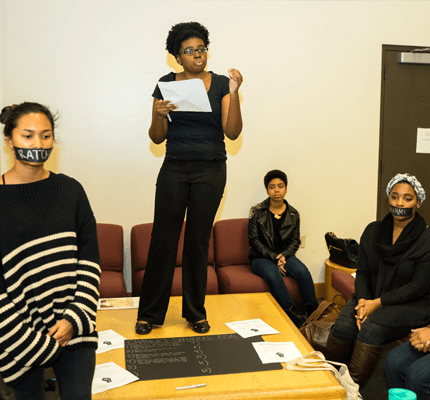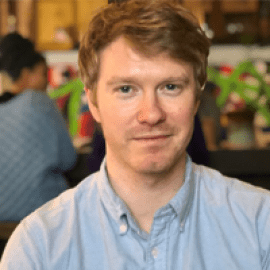
The Flawed “Neutrality” of “Campus Free Speech” Laws
“Campus free speech” laws have been the subject of heated debate in the last few years. These state laws are often modeled on those written by the Goldwater Institute, a conservative think tank. Ben Medeiros suggests that these laws have three key components. First, they eliminate “free speech zones,” so that speech can happen in virtually any public area of a university campus. Second, the legislation affirms that students can protest speakers, but also stipulates that universities cannot disinvite speakers and that students can be punished for “infringement of the expressive rights of others.” Third, the laws include a provision regarding “institutional neutrality” that stipulates that “the university, as an institution, ought to maintain a position of neutrality on the ‘public policy controversies of the day.’” Although these laws ostensibly aim to encourage neutrality, Ben Medeiros’ new article in NCA’s First Amendment Studies argues that the laws are designed to hinder institutional action and discourage diversity and inclusion initiatives on campus.
First, Medeiros discusses how the authors of such bills envision “neutrality.” According to Medeiros, the bills describe neutrality as a “self-evidently positive value.” The bills often state that universities cannot take stances on controversial public issues, and also that universities cannot force professors to take particular positions. Stanley Kurtz of the Goldwater Institute has described “joining the ‘fossil fuel’ divestment campaign” that urges university endowments to divest from fossil fuel companies as one such example of an unacceptable position.
Second, Medeiros posits that the reasoning behind this legislation is flawed for three reasons. First, the laws assume that a “neutral” stance is “apolitical.” However, Medeiros argues, taking a “neutral” position means taking a position in favor of the status quo. Medeiros offers the example of the movement to boycott, divest from, and sanction South Africa during the Apartheid era. In the 1980s, more universities gradually divested from investments in South Africa. Not divesting from South Africa, and thus maintaining the status quo, would have been a political statement that Apartheid was acceptable. Medeiros also argues that a university taking a position, such as divesting from fossil fuels or South Africa, does not “automatically chill” dissenting speech. If professors are free to take positions counter to those officially taken by the university, then free speech has not been affected. Finally, Medeiros writes that the call for universities to take a “neutral” stance on contemporary political issues also belies the fact that other sources, such as external corporate funders, have sought to align course requirements with particular political orientations.
After discussing what constitutes a “neutral” university and some of the flaws in this conception, Medeiros describes some of the harms that can result from such neutrality. For example, conservative critics have sought neutrality on diversity, equity, and inclusion issues. Some universities require faculty members and graduate students to write or sign diversity statements that affirm that they support inclusion on campus. However, conservative critics allege that “[t]hese statements have strong ties to liberal ideology, such as the assumption of group victimization and claims for group-based entitlements, effectively making them ‘partisan litmus tests’ to ‘weed out non-left wing scholars.’” Medeiros argues that studies show that efforts in support of diversity, equity, and inclusion promote student success among marginalized groups.
Medeiros suggests the absence of diversity, equity, and inclusion efforts does not equate to neutrality, but rather is an endorsement of “an ideological agenda of ‘colorblindness’ and neoliberal individualism that rejects the importance of group social identities related to race, gender, or sexuality.” Furthermore, conservative critics who espouse this perspective often seek to undermine race, ethnic, and gender studies, while positioning classical liberalism as the “norm.” Medeiros argues that race, ethnic, and gender studies programs create the possibility for a diversity of viewpoints on campus; thus, opponents of diversity, equity, and inclusion are actually insisting on “viewpoint orthodoxy… not a ‘neutral’ environment for intellectual debate.”
Medeiros concludes by writing that the idea of “neutrality” is tied to the “marketplace of ideas” concept. However, in a private media marketplace, the “marketplace of ideas” is not “value free,” but aligned with status quo because the mass media limit the range of perspectives that can be discussed. Rather than insist on neutrality from companies that cannot be neutral, supporting alternative viewpoints, such as alternative media channels, is more likely to achieve a media populated with diverse viewpoints. Likewise, Medeiros argues that “the university cannot effectively ‘say nothing’ as an institution.” Not taking a position on fossil fuels or diversity is still taking a position. The campus free speech bills could be wielded in such a way that marginalized students may feel unwelcome. Medeiros cautions that universities “must be careful to adjudicate conflicts in a way that genuinely removes the fear of punishment for the expression (or even consideration) of diverse viewpoints – at least in the kinds of campus intellectual forums (such as the classroom and the quad) that John Palfrey identifies as ‘brave spaces,’ or the ‘environment[s] where students are encouraged to engage in serious, respectful, and empathetic discourse . . . [and] learn to confront the uncomfortable.’”


